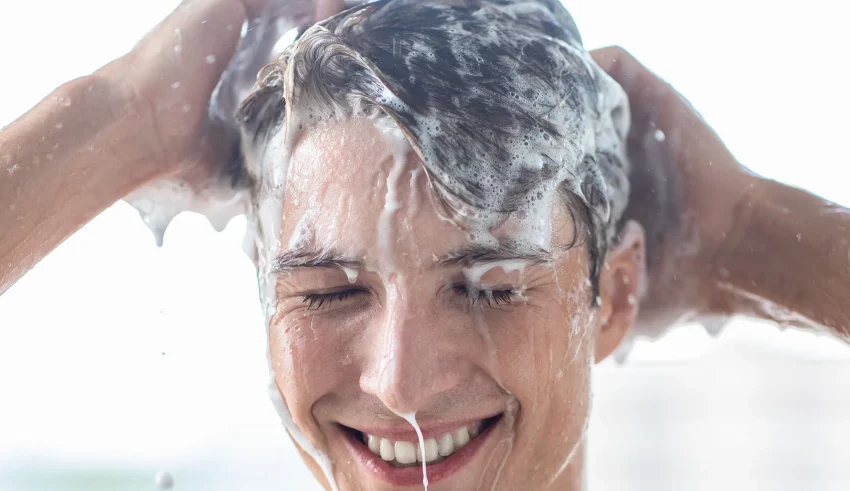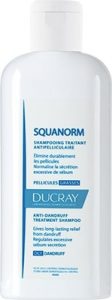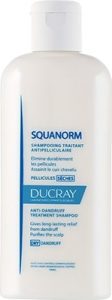
Whether it’s the itchy scalp or the white flakes on your dark sweater, there’s no doubt about it: dandruff is a pain. The good news is that there are many shampoos that can help remedy this chronic skin condition, which affects nearly 50% of people worldwide. Because there are so many variations of dandruff shampoos on the market, it can be hard to tell them apart. That’s why we reached out to the dermatologist and cosmetologist Dr. Fawzia Al Refaey to find out exactly what to look for when buying a dandruff shampoo.
What is the definition of dandruff?
Dandruff is the result of accelerated cell renewal. The cells of the epidermis, which is the most superficial layer of the scalp, multiply too quickly without allowing time for the dead cells to be gradually eliminated. They clump together on the surface of the scalp and form what is called dandruff.
Dandruff can accumulate on any part of the body where there is hair. It is most often found in the hair on the scalp, but it can also be found in beards and eyebrows.
How does anti-dandruff shampoo work?
When you start looking for anti-dandruff shampoos, it’s important to know that dandruff is usually caused by a combination of the following three factors:
- the presence of Malassezia yeast on the scalp
- the overproduction of sebaceous glands
- the body’s immune response to the presence of yeast
As a result, Dr. Fawzia Al Refaey notes that most dandruff shampoos contain ingredients that aim to reduce the presence of yeast on the scalp, prevent the sebaceous glands from producing too much oil and reduce scalp irritation.
Keep reading to learn what to look for in a dandruff shampoo!
What to look for in dandruff shampoo?
1- Look for the right active ingredients: The active ingredients in anti-dandruff shampoos reduce the scalp’s flaking, dryness, and itching. Pyrithione zinc, selenium sulfide, ketoconazole, and salicylic acid can all help reduce dandruff, says Dr. Fawzia Al Refaey.
But since dandruff has many causes, you may need to try several different products to find the one your scalp responds best to. It is a good idea to alternate between different ingredients instead of using the same one all the time, otherwise, you will develop a tolerance to the ingredient.
2- Consider your hair type: The ingredients listed above are effective in eliminating dandruff, but can sometimes be a bit stripping if your hair needs extra moisture, especially for those with dry, thick, curly, or frizzy hair. Look for ingredients that also moisturize the scalp and strands.
3- Wash effectively: For optimal results, rub your dandruff shampoo into your scalp with your fingertips, leaving it on for at least five minutes before rinsing. You can use an anti-dandruff conditioner as well. Dr. Fawzia Al Refaey specifies that the dandruff shampoo should be fast-acting, non-irritating, and non-recurring.
4- Be aware of frequency: Always check the product label. Each dandruff shampoo has its own frequency. In general, it is recommended to wash your hair two to three times a week, but it depends on each shampoo.
How can we remove dandruff?
Dandruff is caused by many factors. And if you thought that everyone suffers from the same dandruff symptoms, you’re wrong. There are different types of hair dandruff and it’s important to identify them correctly and decide on the right treatment. There are two common types of dandruff: dry dandruff and oily dandruff.
1- Dry dandruff
Dry dandruff occurs on a dry scalp. When the scalp is dry, it gets dehydrated and irritated. The scalp can then react by causing itching, redness, and flaking, which in turn can lead to dandruff. Dry dandruff is easy to recognize because it is small, white, volatile, and can be seen on clothing in the form of flakes.
2- Oily dandruff
Oily dandruff occurs on an oily scalp. Excess sebum on the surface favors the development of Malassezia yeast, inducing inflammation and accelerating cell renewal. Oily dandruff is larger, usually itchy, sticks to the hair, and builds up in patches. It is less often seen on clothing than dry dandruff.
The type of shampoo selected will depend on the type of dandruff.
- Shampoos designed for dry dandruff will generally have a keratolytic action, a soothing action, and sometimes an antifungal action to minimize the amount of yeast on the surface, while providing the necessary moisture to a dry and irritated scalp.
- Shampoos designed for oily dandruff will act on one or more of the causes of dandruff, with an antifungal active ingredient to fight against yeast proliferation, a keratolytic active ingredient to remove dandruff, an anti-inflammatory active ingredient to limit redness and itching, and an active ingredient to absorb excess surface sebum.
Now, are you ready to banish those flakes for good? These two expert-approved dandruff shampoos should do the trick.
Squanorm Anti-Dandruff Treatment Shampoo – Oily Dandruff
Squanorm Anti-Dandruff Treatment Shampoo – Dry Dandruff:
What approaches can help get rid of dandruff?
Get some sun. Exposure to the sun for short periods can help reduce yeast production on the scalp.
Reduce your use of hair products. Styling gels, sprays, ointments, and other products can build up on the hair and scalp, increasing oil and dandruff production.
Change your diet. Although there is little evidence, the same foods that promote acne can exacerbate dandruff. Sugary foods and dairy products stimulate the sebaceous glands, which produce more sebum on the skin. Unfortunately, if you are prone to dandruff, you may need to avoid carbohydrates and sugars.
Don’t scratch. We know that dandruff might be very itchy, but scratching can exacerbate the inflammation and irritation. Especially if you have long, sharp nails, scratching can cause open wounds on the scalp, leading to infection. However, gentle massage allows the ingredients to penetrate the scalp.
Living with dandruff on a daily basis
Living daily with dandruff can seriously affect your quality of life. People sometimes think that dandruff is a sign of poor hygiene, but that’s not the case. Dr. Fawzia Al Refaey asserts that dandruff is not contagious either.
Dandruff can become a constant concern, affecting clothing choices, social interaction, and self-esteem, so it’s important to address it.
Don’t hesitate to talk to the health professionals around you. And remember, there are many treatments and daily tips to help you manage your dandruff.











